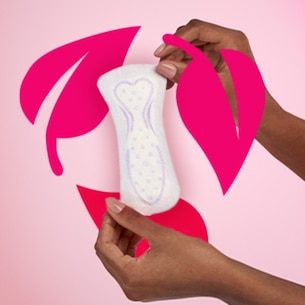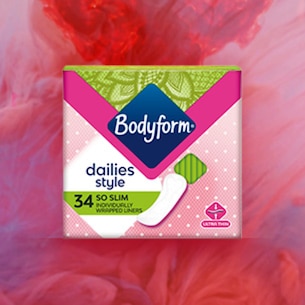We champion the health of women+* by dismantling taboos and shame around their bodies. But caring for women+ also means caring for the world around them.
On this page you’ll find not only our goals, but what we’re currently doing to become more sustainable. We’re honest and open about everything, from vulvas to periods to discharge. So naturally, we want to be as transparent about our sustainability goals as we are about clots and clumps.
Examples of activities to reach our goal

We are switching our electricity to renewable sources such as water, wind or solar, in our factories. The electricity in our factories is purchased externally and is certified with guarantees of origin. These certificates are not created by us, but are issued by external institutes like the European Electricity Certification System (EECS) to secure credibility. By doing so, we support the development of renewable electricity on all markets.

We’re introducing 60% recycled plastics into our towel packaging in 2024. Want to know more? We have paper packaging across half our product range. It’s responsibly sourced, using 100% FSC certified materials (that means the fibre comes from responsibly managed forests and controlled origins).

We’re using vulva-friendly, responsibly sourced materials. Like the pulp used in our towels and liners that is fully FSC Mix certified (that means the fiber comes from responsibly managed forests and controlled origins). And it doesn’t stop there, we’re designing products that last for longer, so create less waste. Like our award winning period pants that can be reused 50+ times, creating a significantly lower carbon footprint than standard period care products.
We’re proud of our sustainability journey and the progress we’ve made so far, but we want to go further to care for women+ and the world around them. Our vision is to become plastic free and reduce material waste. We are committed to reach NetZero by 2050 by focusing on the 8 different areas: Sustainable Innovations, Low Carbon Materials, Fossil-Free Production, Resource Efficiency, Breakthrough Technology, Zero Production Waste, Clean Transportation, Less Waste After Use.*

Project V
Our sustainability promise is part of our wider Project V initiative, supporting the wellbeing of women+* and the world we live in.
We are part of the Essity family and are all working together to become more sustainable. To find out more about our mother company’s work….
